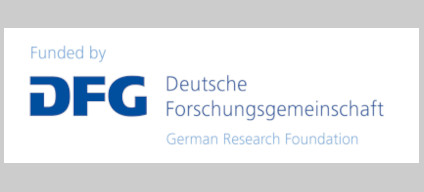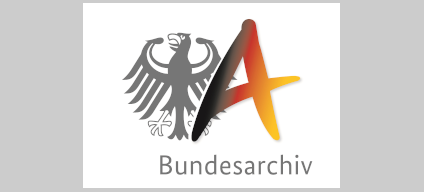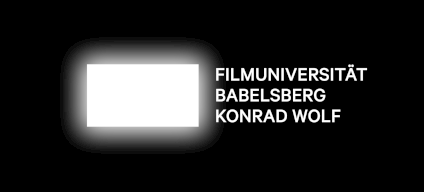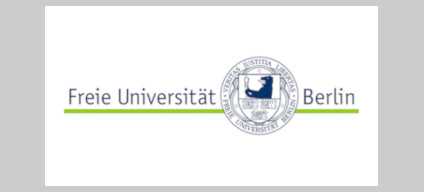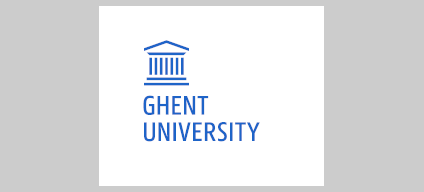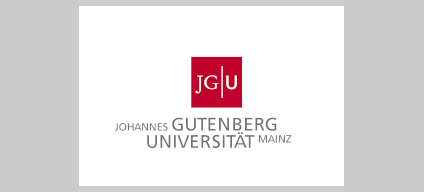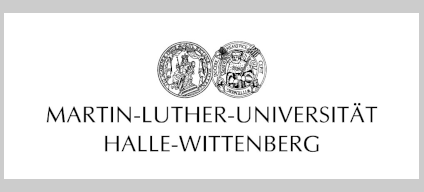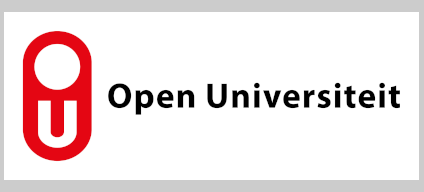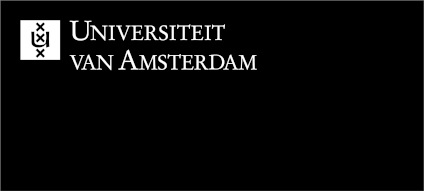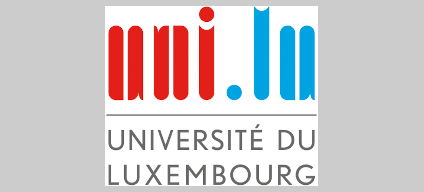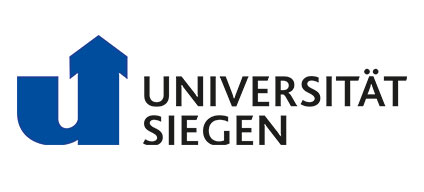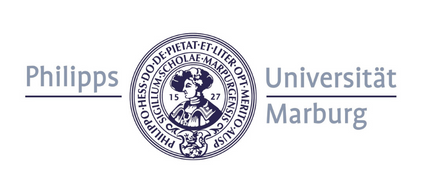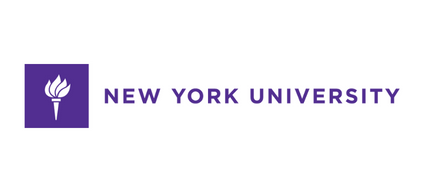Main Content
Conference report "Doing Digital Film History"
By Theodoros Georgiakakis (Maastricht University)
On 17-19 November 2022, the international conference “Doing Digital Film History” took place at Philipps-Universität Marburg. The conference was the closing event of the Network “New Directions in Film Historiography” (2019-2022), an international research network supported by the German Research Foundation (DFG). The conference, organized by network coordinator Sarah-Mai Dang (Philipps-Universität Marburg) and network member Tim van der Heijden (Open University of the Netherlands), addressed the potential and challenges of doing film historical research and teaching in the digital age.
The conference program included an opening keynote, six thematic panels, a round table and a film screening. The thematic categorization of the thematic panels was as follows:
- Panel 1: Digital Objects and Critical Perspectives
- Panel 2: Data, Corpus and Curation
- Panel 3: Female Film Workers and Data Sources
- Panel 4: Data Visualizations
- Panel 5: Teaching and Publishing
- Panel 6: Digital Tools and Scalable Methods
In her opening keynote, Jane Gaines (Columbia University) offered a review of the current debates around Digital Humanities, from the perspective of the methodological transition from paper documents and photochemical prints to the digitization of materials and the computerization of historical investigation. Professor Gaines tackled the question not only of knowledge acquisition, but also of assumptions about knowledge produced by digital tools.
Panel 1: Digital Objects and Critical Perspectives
Casper Tybjerg (University of Copenhagen) reflected on the relation between research material and research questions. He juxtaposed the accepted textbook practices on empirical methodologies that place the formulation of a research question before the gathering of the data, with the research practices of historians, who first immerse themselves into an archive and then formulate their research question based on what discoveries they make. Tybjerg presented the historian’s immersion more explicitly as a well-established procedure, as it is dictated by the affordances of the archive.
Christian Gosvig Olesen (University of Amsterdam), during his presentation, reflected on the development and documentation of the CLARIAH Media Suite research environment’s interface from a historical and tool-critical perspective. The focus of this presentation was around the environment’s built-in video annotation tool. The presenter talked about the two methods he used to carry out his research. First, he carried out a comparative analysis between traditional multimedia scholarship practices and the new affordances available by the Media Suite, to understand its timeline in a historical perspective as a tool for knowledge production. Second, he critically reflected on the Media Suite as a web-based networked infrastructure in relation to other online archival resources.
Panel 2: Data, Corpus and Curation
Alexandra Schneider (Johannes Gutenberg-Universität Mainz) and Yvonne Zimmermann (Philipps-Universität Marburg), talked about the processes of data cleaning and the preservation of data diversity, reflecting on their own digital film historical projects. The paper was a critical intervention on the preparation of data that is made available for doing digital film history and focuses on the challenges of how film historical data is collected, cleaned and merged into datasets. They explained that the data can be found originally in diverse formats and sometimes they may be faulty or erroneous. For this reason, they find that a choice of an appropriate format must be made to which all data must conform. Two cases studies of databases were discussed: (1) “The Straschek Collection: Mapping German Film Migration 1930-1950”, and (2) “The Asta Nielsen Database: The International Film Star and the Emergence of the Star System 1911-1914”. Two strategies of data cleaning were presented: first to erase the anomalies (e.g. the name Nielsen is often misspelled – albeit deliberately), and second to use indexing of data with the use of pointers between datasets, used to connect them (e.g. original movie titles connected to the various distribution titles). In the final part of their presentation, Schneider and Zimmermann explained the necessity of data diversity. In the case of the movie titles example, for instance, data diversity may help understand the international distribution of each film.
Fabian Kling (Johannes Gutenberg-Universität Mainz) talked about the emergence of online tools and public databases and how these tools assist the research on film history. He discussed both the potential and challenges that these new methods bring forward. Some of the advantages of using digital tools for research, for instance, include the wide-spread of information and the ease of access to digital sources. Challenging aspects of using digital sources are that data recovered from these sources can be highly heterogeneous as they display raw and oftentimes inconsistent information. The presenter proposed a critical framework for researching and curating information on a single film historic event, person or production by means of using online sources. The contribution of this research was not focused on the analysis of large data sets, but rather on gathering information from differing and fragmented sources. He demonstrated the framework by using a case study (German Film Migration between 1933 and 1945, see above), entitled “Large Scale Close Readings”. It entailed first researching the information, then curating the data and finally displaying the results. The online sources from where the data for the case study stemmed were of four types: (1) encyclopedic platforms, (2) digital archives, (3) search engines, and (4) filmographic databases. As a first step he accumulated the data from the digital sources and as a next step curated the data that surfaced. For the second step, the presenter talked about the curation of the data using a method called “Spurensuche” (a search for traces). In the end, he reflected on the “black box” aspect of such digital tools and concluded that researchers must find strategies to question and interpret the results they provide.
Mila Oiva (Tallinn University) presented her research on newsreels and the impact they had on how the audience perceived the world. She asserted that studying newsreels is crucial because understanding the worldviews that newsreels conveyed in a long temporal perspective would allow to explain better how audiovisual influencing and propaganda works, and how that has changed over time. Due to the large amount of data, she employed a systematic exploration of newsreels covering several decades, and analyzed the data with the use of computational quantitative methods alongside critical qualitative analysis. The project focused on four areas: (1) film frames, (2) cinematic and topic trends, (3) geography, and (4) authors, gender and agency. The analysis of film frames deals with the manual or computational recognition and annotation. The results are lists of textual keywords or numerical features. The analysis of the frames is based on sorting, clustering and statistical analysis of the extracted features. However, this approach has several shortcomings, namely translation loss, a partial view and an emphasis on deduction. The presenter then proceeded to suggest some alternative approaches: computer vision, using computational manipulation and rearranging audiovisual data to reveal innate features through estrangement; the “distant viewing” framework, which puts emphasis on viewing the dataset as an interpretative action; and numerical representation, which allows studying of human perception and experience through gradual and continuous variation instead of a small number of discrete categories (since visual representation can describe cultural processes that are linguistically hard to capture). The presenter proposed a method entitled “vector embeddings”, which first turns the frames into multidimensional vectors through the use of ResNet50 (Convolutional Neural Networks) and then visualizes these vectors with the help of 2D projections such as t-SNE and UMAP. The implications of this approach are multiple. First of all, data keeps a numerical form instead of turning into textual categories. Secondly, emphasis is placed on how objects and individuals are being visualized instead of leaving this to the “agnostic” vision of the computer and postponing the human interpretation of the whole collection to the end of the study. Oiva subsequently listed the benefits of this approach: it shows continuous multimodal similarities and differences instead of textual categories, it allows starting the study inductively, to critically evaluate the emerging categories instead of instilling pre-set assumptions to the data. In this approach big data is used to critically evaluate what we think we know about the past. In the end, instead of a conclusion, the presenter listed some desirable future features of such a digital tool: the ability to measure movement inside the shots and the ability to measure the differences between the shots.
Panel 3: Female Film Workers and Data Sources
Paul Duchesne (Technische Informationsbibliothek Hannover) and Adelheid Heftberger (Bundesarchiv) presented on the subject of women in film production. It was emphasized throughout their presentation that their main contribution and aim involved the attempt to evaluate the filmographic records that are available on Wikidata as well as the methods for querying and using the data for analysis. The initial phase was to examine the filmographic data and how they are produced, disseminated and enriched in film archives. The second step involved a discussion of Wikidata as a data source, how the filmographic records are presented, and potential issues from the perspective of a cataloguer. Additionally, the amount of data available, the representation of different roles in the filmmaking process, and the specific contribution of women were examined. The presentation concluded with a critical discussion and the announcement that the code will be posted on GitHub, so that others may use it to run their own queries.
In the presentation “(Re)Visioning Women’s Film History: The Women Film Pioneers Project as a Digital Feminist Film Historiographical Object” Kate Saccone (University of Amsterdam) presented the Women Film Pioneers Project (WFPP), an open-access database hosted by Columbia University Libraries. WFPP was discussed during the presenter's talk regarding both the processual character of feminist cinema historiography and the mutability of digital scholarship and online publishing, with a focus on how these two things interact in this case. Moreover, she highlighted that WFPP relies on and places central importance on “(re)visioning” a practice and theoretical framework that connects the iterative character of both digital humanities and feminist media studies with more general historiographic themes of (re)discovery, revision, and visibility. Saccone adopted a chronological viewpoint, tracking key moments in the project, in order to pay attention to the evolving practical and conceptual developments of WFPP as an online platform and film historical resource.
In her presentation “Desperately Seeking Evidence: Research Data Management and Women in Film History”, Sarah-Mai Dang (Philipps-Universität Marburg) argued for the help of data visualizations in presenting film historical data. She thereby highlighted the role of research data management (RDM), and the intellectual conventions and institutional frameworks it reflects in which specific concepts of film, canon and authorship are inscribed. Critically reflecting on the collection, organization, storage and documentation of film historical data is needed to understand how RDM shapes our understanding of film history. In the presentation, Dang also presented her research project “Aesthetics of Access” (DAVIF), funded by the Federal Ministry of Education and Research (BMBF), whose goal is “to explore the aesthetics of access in light of the growing production and application of digital data in the context of women in film history”.
Panel 4: Data Visualizations
The contribution by Marcus Burkhardt (University of Siegen) and Skadi Loist (Film University Babelsberg), entitled “Visualization in/as Digital Media Studies”, explored the potential as well as the epistemological and practical challenges of visualization in digital media studies. Starting off the presentation with the premise of the renowned Chinese proverb “One picture is worth ten thousand words”, the two researchers foregrounded data visualization as an exploratory mode of research. Drawing inspiration from their own individual research projects, they talked about the inherently interdisciplinary nature of data visualization practices and the various steps involved. Multiple case studies were introduced, including “Visual Network Analysis of Film Circulation” and “Visualization of Degree of Centrality for International Film Festivals”. In this undirected network of sampled film festivals that used data stemming from the Internet Movie Database (IMDb), the color and size of the nodes (representing festivals) is scaled by the degree of their centrality in an entire dataset when at least one film is shared between festivals. A third case study included in this presentation was a data visualization of the evolution of Facebook’s API References, from 2006 to 2020 (selected sample), based on archived reference documentation from the Internet Archive. Finally, the presentation entailed a visualization of the evolution of the “user” from 2006 to 2010, maintaining the view that the user as a “datafied” object is not fixed but experimented with, worked upon and reconfigured. The presentation concluded with the view that there is no magic button when creating data visualizations: visualizations take work in the form of datafication, exploration, inquiry, problematization, explanation and communication.
Matthias Grotkopp (Freie Universität Berlin), in his presentation entitled “Catastrophe of Pointillism of disaster? Annotating and Visualizing Patterns of Ecological Imagination”, discussed a case study of an ongoing investigation of the spatiotemporal patterns in audiovisual discourse on anthropogenic climate change. This case study demonstrated a film analytical method of combining a structured film analytical vocabulary with semantic web technologies, by applying both semi-automatic and manual annotation methods. This contribution prescribed the use of digital tools to research questions of historical poetics not only for statistical analysis but as a means to reconstruct and compare the dynamics of audiovisual scenarios of perception. An important step in this approach is the visualization of complex patterns of audiovisual staging. To this end, the presentation showed: (1) a multimodal visualization of “Vertical Montage” in the films of Alexander Nevsky, and (2) a visualization of the distribution of 16 motives over 52 shots in the flag-raising sequence in Kino-Eye (Dziga Vertov). The presenter then talked about working on a project with the topic “Annotation and Visualization with Advene”, based on the AdA Filmontology, carried out by the junior research group “Audio-Visual Rhetorics of Affect”. The presentation featured data visualizations of various formats and types.
The presentation by Deb Verhoeven (University of Alberta, Canada), entitled “A stormy Signal Spread: Data, Disaster and Visual Depth”, combined digital humanities research with artistic practices. It included a primarily graphic essay, which rendered different approaches to visuality, affect and evidence across different historical periods using a comic strip/graphic novel format. Rather than merely visualizing historical data, the presenter talked about historicizing data visualization and demonstrating and decentering the political and aesthetic context in which digital data visualizations have been developed. The intention of the presentation was to reveal new perspectives on data visualization and graph (network) data by using a creative combination of images and words to demystify the history of perspective itself.
Panel 5: Teaching and Publishing
Josephine Diecke (Philipps-Universität Marburg) and Malte Hagener (Philipps-Universität Marburg) delivered their presentation on “Managing Tools and Expectations: Dos and Don’ts of Teaching Digital Methods for Film Analysis and Film Historiography”. During their presentation, they promoted their view that the reflection and negotiation of digital tools and content is as important as the actual findings of a study. Drawing on their recent experiences with a course on film and text analysis, the authors discussed the Dos and Don’ts of teaching digital methods in film studies. In doing so, they reflected upon methodological and pragmatic peculiarities of open and closed source software as well as digital media literacy. The presenters thus discussed their observations and learnings from working on this project: (1) the distinction between process-oriented goals, versus result oriented goals, (2) the preparation of the technical and methodological foundations, (3) the encouragement of experimentation and creativity albeit with defined boundaries, (4) the combination of qualitative and quantitative methods, and (5) the connection between hands-on approaches and theoretical reflections and readings. With their contribution, Diecke and Hagener asserted that in addition to film-historiographical and film-theoretical perspectives, a profound understanding of disciplinary and cross-disciplinary approaches is much needed to understand the new possibilities and limitations brought by the digital age.
Nicole Braida (Johannes Gutenberg-Universität Mainz) and Frauke Pirk (Johannes Gutenberg-Universität Mainz) presented on the topic of “Teaching an Approach to Small Gauge Formats with Digital Methods”. They asserted that working with digital methods and data not only challenged their way of doing film studies, but also how they teach it. By taking a specific course as a starting point, they offered insights into the challenges of teaching digital methods for undergraduates in film history. The presenters explained how they took the study of small gauge film formats as a starting point in order to familiarize students with issues of doing film history with digital methods. Finally, they discussed the challenges faced and experiments made when evaluating their approach to the study of film historical material with digital methods, and how to introduce students to key digital humanities practices and concepts. Braida and Pirk presented the following challenges: (1) introducing new tools to students that have no previous relevant competencies, (2) facilitating students to produce a visualization themselves, and (3) combining the theoretical knowledge with the practical skills needed to carry out research. Alongside these challenges, the presenters also talked about the limitations that emerged during the implementation: (1) the limited time frame, (2) the mandatory nature of the online sessions, (3) the interest and understanding of digital humanities’ concepts, the uncertainty and inexperience when working with digital methods, and (4) the limited availability of datasets. In the end, the presenters talked about the novel goals they set for better carrying out such an endeavour as follows: (1) to learn how to make data for film studies, media studies and historiography more productive, (2) to get acquainted with tools that help make film and media history visible, (3) to be more critical of tools and data sources, (4) to use visualizations as explorative tools to learn about the data, and (5) to gain more qualification on using such tools.
In his presentation “Publishing Digital Research: The Diamond Open Access way at Melusina Press”, Niels-Oliver Walkowsi (University of Luxembourg) introduced Melusina Press, the university press at the University of Luxembourg. The presenter talked about the publisher’s Diamond Open Access mission, as well as its attempts to support today's digitally aided research through new publication formats. The presentation showcased two very distinct examples: executable papers and open educational video essays. These new formats both address two distinct types of scientific engagement with the digital. Each showcase featured an introduction into the underlying concept, an example of a publication of that type from Melusina Press, and a discussion of the experiences and challenges that Melusina faced in order to turn these kinds of objects into publications with all the implications that this entails. The presentation concluded with an overview of the next steps that Melusina will take to strengthen these new formats, as well as with some general lessons-learned with respect to the introduction of innovation around publication types into the scholarly communication ecosystem.
Panel 6: Digital Tools and Scalable Methods
Tim van der Heijden (Open University of the Netherlands), Lauren Tilton (University of Richmond) and Taylor Arnold (University of Richmond) held a presentation with the title: “Distant Viewing: the Amateur Film Platform”. With their contribution, the presenters aimed to shine a new light on the collection of the Amateur Film Platform, an online platform that hosts a unique collection of more than eight thousand amateur films and videos made by Dutch amateur and family filmmakers during the twentieth and twenty-first centuries. In order to carry out their task, the presenters talked about the utilization of the approach of “Distant Viewing”, which is an innovative theoretical framework and methodology for analyzing large datasets of audio-visual sources at scale. This framework calls for “the automatic extraction of semantic elements of visual materials followed by the aggregation and visualization of these elements via techniques from exploratory data analysis” (Arnold & Tilton 2019: 4). The research question driving this contribution forward was on the heuristic and methodological value of the Distant Viewing approach for studying the history and development of amateur media (film, video and digital media) throughout the twentieth century. The presentation then listed the variables (e.g. medium, time period, film duration, shot length, shot type, etc.) as well as the algorithms used for the analysis: (1) shot boundary detection algorithm, (2) image segmentation algorithm, and (3) face detection algorithm. The presentation also featured sample images and descriptions for each stage of the visualizations. Using the distant viewing approach, this contribution aimed to analyze both aesthetic and technological changes in the collections of the Amateur Film Platform over time. At their conclusion, the presenters argued for the necessity to combine “distant” and “close” viewing approaches, reflected on the derived digital hermeneutics in relation to both source and tool criticism, and proposed a hybrid heuristics approach in doing digital film history.
The contribution by Susan Aasman (University of Groningen) and Tom Slootweg (University of Groningen), entitled “Unit of Interest as Digital Hermeneutics: Moving beyond Formalism for Doing Cross-Media History”, introduced a conceptual approach that allows for innovative cross-media historical research. In an effort to develop a digital hermeneutics for audio-visual archival material, this presentation explored the added value of the concept of “unit of interest”. A unit of interest indicates a section or unit of an audiovisual text where the aspects under scrutiny are manifested through a combination of moving images, environmental sound and/or the spoken word. These aspects, together, can be identified as a particular meaningful multimodal “trait” of the object of analysis. By acknowledging a cluster of interrelated features as the main starting point of analysis, this approach aims to embrace the complexity of audiovisual sources, and to challenge the more reductive rigor needed in many computational and quantitative approaches that are so common in data-driven research. By discussing a case study on first-person and autobiographical documentaries, the presenters discussed the benefits of a digital hermeneutics suited for less formally cohesive and standardized media artifacts, whilst also underlining the importance of a constructive dialogue between qualitative and quantitative historical media analysis.
In her presentation “A Scalable Perspective on Historical Cinema Cultures: Studying Movie Going in Amsterdam (1945-1975) with Digital Data and Tools”, Julia Noordegraaf (University of Amsterdam) talked about new methodologies that have been developed to make sense of the “big historical data”, that surfaced due to the digitization of archival holdings, the broad variety of digital tools that has become available, and the newly emerging infrastructures. This contribution evaluates the opportunities and challenges arising from such data-driven media historical research, through a central case study: the programming of Dutch fiction films in Amsterdam cinemas in the first decades after WWII. With research questions around the distribution and reception of these films, the analysis focused on discovering geographical and longitudinal patterns in the programming of these films, testing existing assumptions about the role and place of local films in the context of the international film market. Following the trajectory from extracting film listings from digitized newspapers via the visualization and analysis of this “bigger data” on local Amsterdam post-WWII cinema culture with Python notebooks up until the interpretation and contextualization of the results, the contribution provides a methodological and epistemological reflection on a practice of doing digital film historiography and outlines a proposed framework for “scalable film historical research”. The presenter concluded that: (1) structured data provides automatic extraction but requires manual cleaning, (2) a snapshot provides a tiny glimpse of a past reality, (3) “distant” approaches are heuristically useful but “close” analysis is always required, and (4) data-driven research primarily invites deconstructing and rethinking established notions, such as the perceived nationality of a cinema culture.
The second day of the conference concluded with a screening of the film Cinema’s First Nasty Women: Queens of Destruction in the Capitol Filmkunsttheater Marburg introduced by a video by the curators, Maggie Hennefeld (University of Minnesota), Laura Horak (Carleton University), and Elif Rongen-Kaynakçi (Eye Filmmuseum), and chaired by Kate Saccone (University of Amsterdam). The screening featured a compilation of women in films defying gender stereotypes: a teenage miscreant named Léontine floods her house and flies away, black actress Bertha Regustus desegregates white public space with her contagious laughter, Rosalie (Sarah Duhamel) provokes a dancing outbreak with her new phonograph, a housemaid named Mary Jane explodes through the chimney, Cunégonde (Little Chrysia) tyrannizes her spouse with a lasso, Tilly (Alma Taylor) and Sally (Chrissie White) bulldoze a tea party, and lesbian sensation Fay Tincher brings queer erotic vibes to an all-girls boarding school.
The third and final conference day featured a roundtable discussion with the reflexive general theme: “Where do we go now?”. This closing roundtable, organized by Feng-Mei Heberer (New York University) and Christian Gosvig Olesen (University of Amsterdam) wrapped up the conference by revisiting selected key themes and reflecting on the role of digital humanities in film and media studies through the particular expertise of the speakers. Bringing together junior and senior scholars, the roundtable facilitated a generational dialogue covering past, present and future developments. Panelists included Susan Aasman (University of Groningen), Tom Slootweg (University of Groningen), Julia Noordegraaf (University of Amsterdam) & Nanne van Noord (University of Amsterdam), Alexandra Schneider (Johannes Gutenberg-Universität Mainz), Fabian Kling (Johannes Gutenberg-Universität Mainz), Deb Verhoeven (University of Alberta, Canada) and Pauline Junginger (Philipps-Universität Marburg). The discussion began with an opening statement or provocation on what is the most significant contribution of DH to film and media studies. After the initial dialogue, the discussion touched upon four central themes:
- Infrastructure & Sustainability
- Teaching
- Visualization
- Diversity
Each of these themes contained several questions to drive the discussion forward.
The majority of conference presentations will be turned into chapters for the edited volume Doing Digital Film History: Concepts, Tools, Practices, edited by Sarah-Mai Dang, Tim van der Heijden and Christian Gosvig Olesen. The book is currently in preparation and will be published by De Gruyter Oldenbourg in the Studies in Digital History and Hermeneutics series.
December 12, 2022
For the photo gallery with selected pictures of the conference look here.
